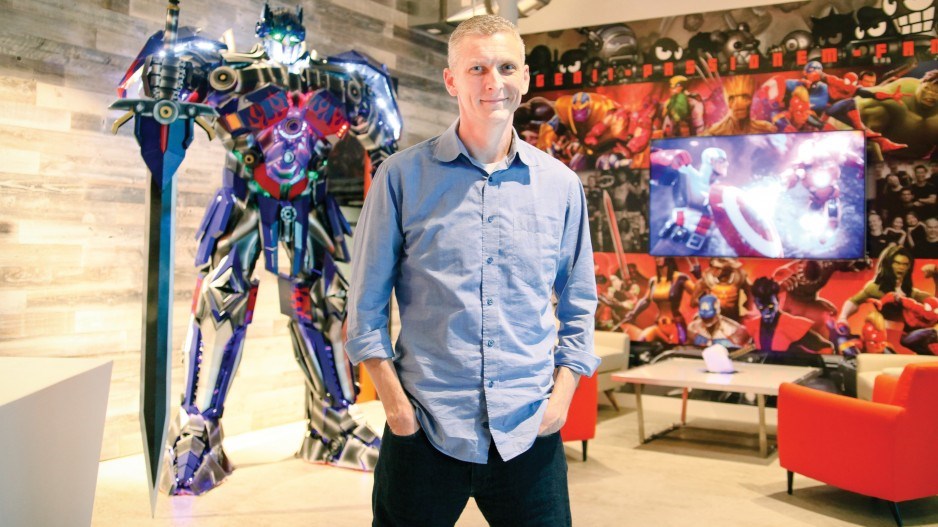The rise of mobile devices has shaken up the world of gaming.
Where once a gamer had to spend $60 to get the latest blockbuster adventure at a store or go to a friend’s house with an extra controller or log onto a computer and connect with others over the Internet, those experiences are now all possible with phones and tablets – and in many cases, they’re free.
“I can play it on a bus, I can play it when I visit my grandmother, I can play it school, I can play it at work,” said Tim Fields, senior vice-president and general manager of Kabam Vancouver, one of the city’s largest game developers dedicated to mobile. “And beyond that, it can put out graphics every bit as good as a PlayStation 3.”
Vancouver’s been mostly known as a PC and console town, with big studios here like Electronic Arts and Capcom, but mobile game developers like Kabam, A Thinking Ape, IUGO and East Side Games are on the rise.
It’s a good environment for studios here. High tech is B.C.’s fastest-growing industrial sector, and the talent pool available from schools like the University of British Columbia and Emily Carr University of Art and Design is deep and diverse.
“That’s very important, because we make games for the whole world,” Fields said.
The numbers tell the story of mobile games’ successes.
For multi-platform console games in recent years, Grand Theft Auto V and Diablo III are among the top-selling titles. Grand Theft Auto V has sold 65 million copies since its 2013 release, according to Take-Two Interactive earlier this year. And Diablo III has sold 30 million copies since its 2014 release, according to Blizzard Entertainment last year.
In comparison, Kabam’s mobile multiplayer Marvel: Contest of Champions has been downloaded 85 million times since its 2014 release.
“The size of the stage you get to perform on is so much bigger [on mobile], and that’s just amazing because suddenly that means so many people can play your games,” Fields said.
The pricing model of many mobile games like Kabam’s Marvel title is known as “freemium” or “free-to-play”: the game costs nothing to download, but there’s the option of paying premiums for add-ons.
This summer’s viral hit, Pokémon Go, was also released free of charge.
The large mobile audience and freemium model has allowed Kabam to make over $300 million in revenue on Marvel: Contest of Champions.
Mobile-game revenue is expected to grow to $36.9 billion this year, according to research firm Newzoo BV.
Kabam opened its Vancouver studio in 2013 after it acquired local mobile game developer Exploding Barrel Games.
The company has 146 employees, with two floors of space on Alberni Street that’s something out of the California tech world: walls of snacks, scooters to get around the open office, a speakeasy behind a hidden wall and even nap cubby-holes that boast USB phone chargers.
Though Kabam is looking to reach 200 employees by the end of 2017, its Vancouver director of studio operations, Amie King, said the company doesn’t want to “hire for the sake of hiring.” Game studios can “balloon up” quickly with success only to run out of money or are get the axe from their publishers.
Local mobile game studio Roadhouse Interactive was forced to close September 1 after trouble with financing, which began when a major customer shut down its mobile application arm, said James Hursthouse, who was the studio’s co-founder and CEO.
Roadhouse had 125 employees. The studio launched in 2009 making games for web browsers, but switched to mobile-only in 2013 after it realized the potential of phones and tablets.
Some of its hits included Iron Maiden and Warhammer games. But even with Roadhouse’s strong partnerships and its diversity of genres – including sports and bingo – mobile games is still a challenging industry.
“If you do make a hit game, that could mean $100 million a year,” said Hursthouse.
“But there’s a comparable amount of risk and competition. If 10 guys with a great idea and a diet of ramen can make successful products, the odds of that become increasingly small as the industry grows.”




